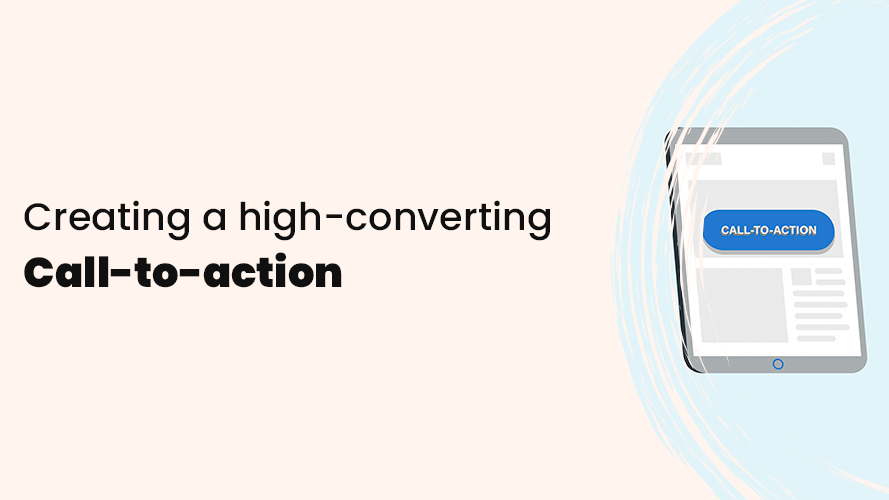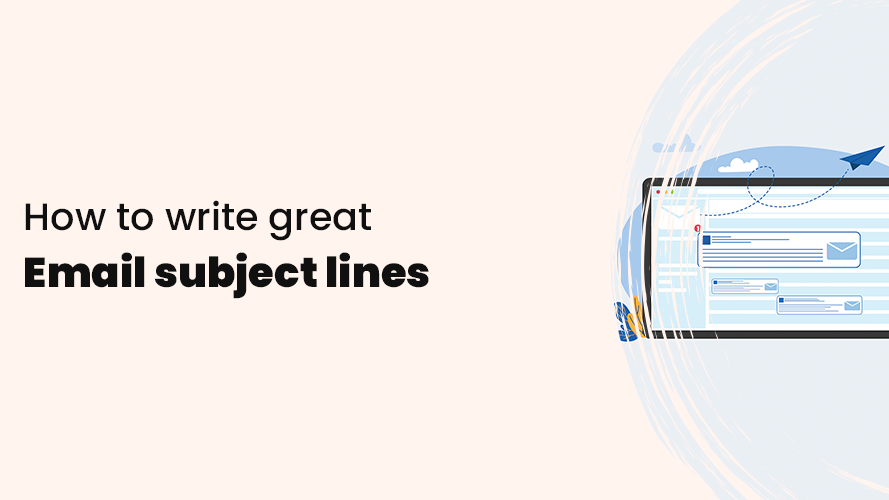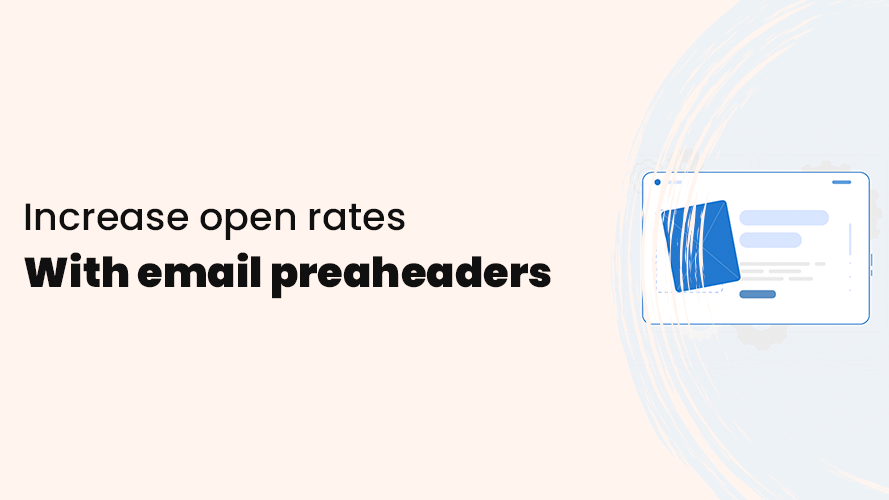How to
Create engaging email newsletters
Find out why good writing is crucial for email newsletters and how you can improve your writing skills with practical tips.
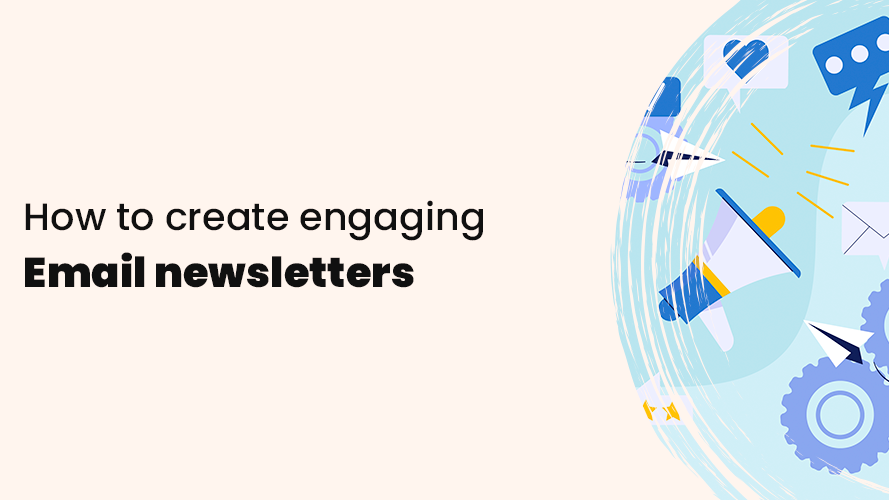
Writing engaging content for email newsletters and other campaigns is all about writing copy that is compelling and gets readers to do what you want them to do. This means you should have a specific goal in mind for each email.
For example, you could get them to make a purchase, sign up for your service, or take a course.
Good content for email marketing is:
- Visually easy to read
- They have a single marketing objective
- Relevant to the target audience
- Shows what the reader needs to do next
To help you write even better and more engaging content for your email marketing, we’ve put together lots of tips that you can use when writing your copy.
Why is it crucial to write engaging email content?
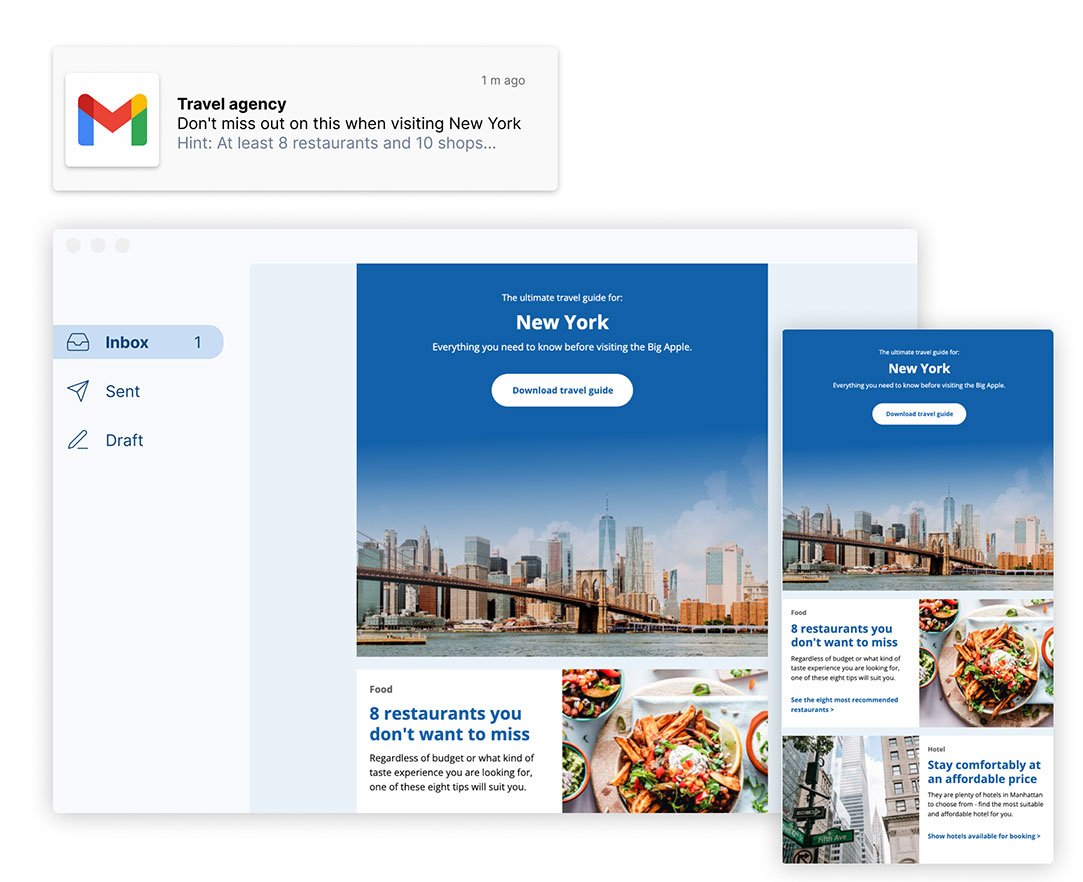
You can design a great-looking email and have a great subject line that gets all your subscribers to open your newsletter, but if it lacks a clear and compelling message, is sloppily written, or isn’t relevant to your subscribers, you’ll have a hard time getting readers to do what you want them to do.
It’s important to focus on writing good content as it will help you achieve better results in terms of sales and other conversions. For example, if your content increases the conversion rate from 1% to 2% in your emails, it means that you have doubled the number of conversions and can be the deciding factor in the success of your email campaign.
What are the benefits of good email content?
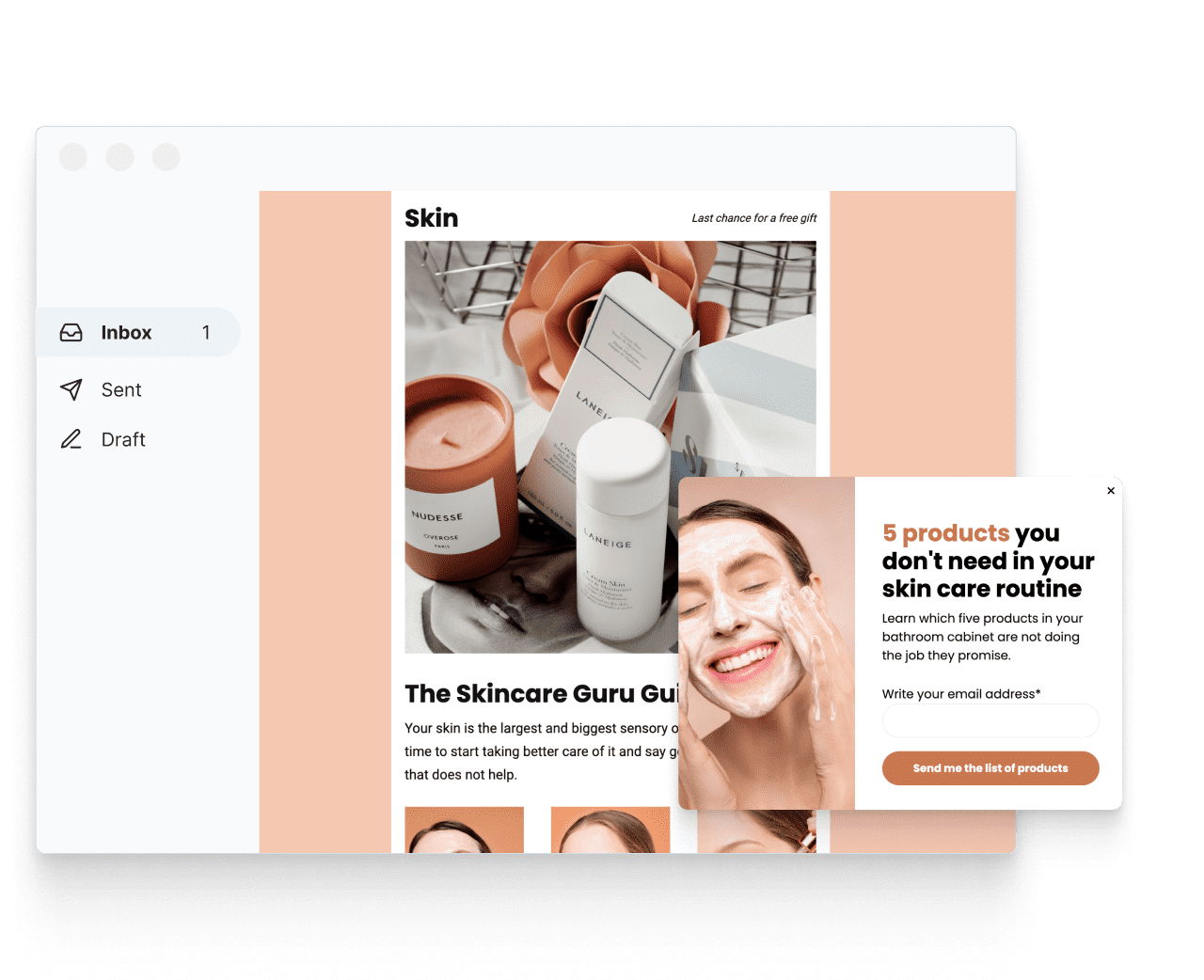
Well-written copy has many benefits that help make your email campaigns more effective and profitable.
Increased engagement and conversion rates
Content that is engaging and relevant to your target audience will capture your subscribers’ attention and interest. It leads to increased interaction in your emails and the chances of getting readers to do what you want them to do.
In addition, if your copy focuses on conveying the value and benefits of the product, service, or offer, your chances of higher engagement and conversion rates increase further. This is because subscribers will be more receptive to taking your desired action if they understand the value of it.
Better relationships with your target audience
To engage your subscribers in what you have to say, you need to put them in the spotlight, not yourself. You need to provide valuable information to your audience and speak to them personally to make them feel understood and valued. It will build trust and customer loyalty over time and create a long-lasting relationship between you and your audience.
Increases profitability
When your emails are designed and written correctly, they will increase engagement, and conversion, and ultimately act as a powerful marketing channel to increase your revenue. Strong customer relationships also lead to your target audience promoting your services and products for you to their surroundings.
10 tips on how to write engaging email newsletters
Writing copy for your emails can be time-consuming and challenging for you as a business owner. Sending emails to your subscribers is personal and is not something you should take for granted.
If you don’t meet their expectations, you run the risk of them throwing your emails in the trash or even unsubscribing from your mailing list.
The good news is that there are plenty of tips below that you can use to write better content and get your subscribers to engage with what you communicate to them.
Write copy that is easy to understand
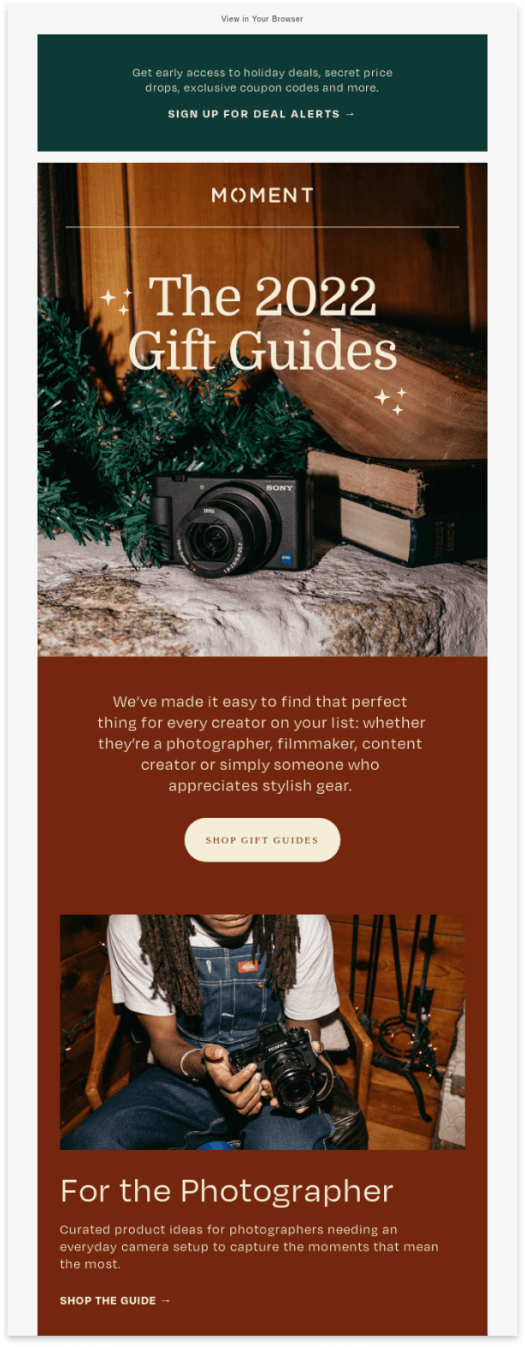
You will be doing your readers and, above all, yourself a great favor if you make sure that your copy are easy to understand and more to the point. Ideally, the reader shouldn’t have to make more effort than necessary and should be able to absorb your message quickly. Take that extra time and simplify your content as much as possible for your subscribers.
For the best possible readability, you should consider:
- Write short sentences and try to stick to a maximum of 10-12 words if possible.
- Make sure your paragraphs are not too long. Try to keep to 2-4 lines for each paragraph.
- Use simple word choices and avoid industry jargon and terms. You are not writing to show readers how much you know about your industry. Instead, write in a way that people outside your industry can understand, regardless of age.
- Be understandable – write things out step by step.
- Use bulleted lists.
- Use bold or italics to highlight specific words or sentences.
Be concise
If you need to write several hundred words in your emails, something might not be the way it should.
In many cases, your readers will quickly skim through your emails and, the more text there is, the more likely they are to feel it’s not worth their time to read through it all.
Therefore, get straight to the point. Clearly show what you want to communicate to your subscribers, how what you are communicating can help them, and what you want them to do.
Another good reason to keep it short and sweet is that most people read their emails on their cell phones. As you probably know yourself, cell phones bring a lot of distractions, which makes it even more crucial to grab the reader’s attention right away and make sure your message is easy to understand.
Use headlines
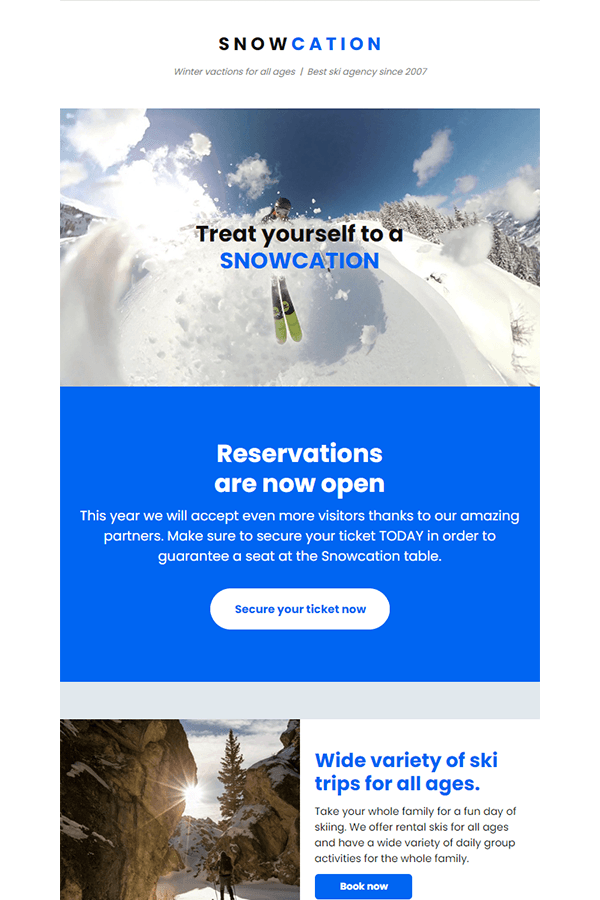
Headlines and subheadings exist to guide the reader through the content of your emails and help them find what interests them as quickly as possible.
As mentioned earlier, many of your subscribers will skim through your content and not read word for word. With that in mind, you must use clear headlines. It makes it more likely that the reader will find something of interest and then stop and read more.
Be personal and write for your target audience
The key to building a relationship and making your emails feel personal, relevant, and interesting, is to write as if you have a specific person in mind. For example, you can write for a persona, someone you know, or a customer to represent your target audience.
If you want your message to reach your subscribers, you should talk to them personally. Knowing your target audience gives you an advantage over your competitors.
Knowing who you are writing to, what their challenges, goals, and interests are, what motivates them, and what prior knowledge they have about the topic you are writing about, will help you know what level to set in your writing and what word choices to make.
Make sure to always write for your specific audience and keep it on a personal level to engage your subscribers more easily.
Focus on benefits, not features
When you talk about your offers, you should focus on the benefits they provide rather than their features. If you talk about features, the focus is on you, your company, and your product. If you talk about benefits, the focus is on how your product or service can help your subscribers with a problem and simplify their lives.
For example, if you sell headphones, instead of describing their technical details, you can focus on how comfortable they are and how they don’t tire the ears so your readers can enjoy many hours of their favorite music.
So, you need to make it clear and describe what your subscribers get out of it. What exactly are you giving your readers that will make their lives better?
Include a single call-to-action
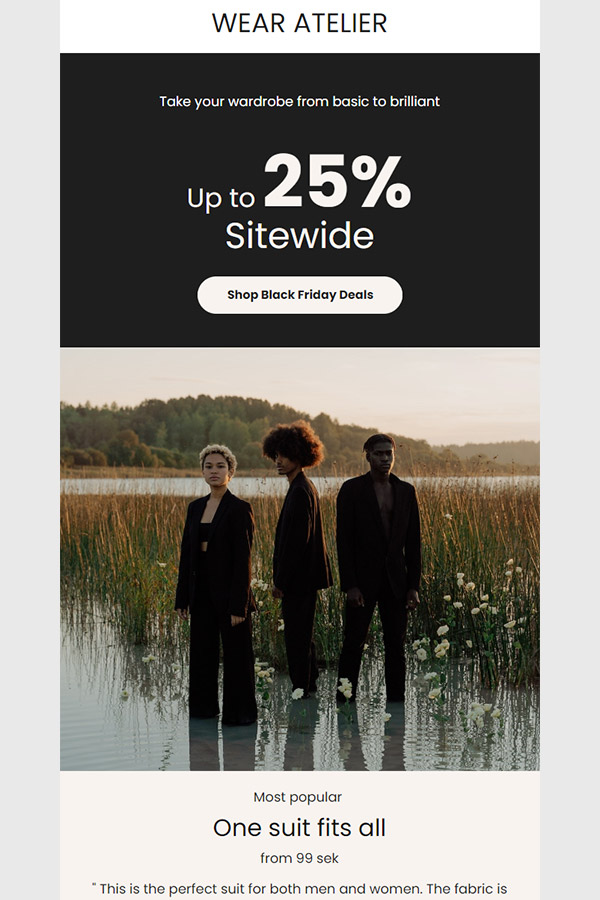
A scattershot email without a clear objective is a poorly performing email. It can be tempting to use multiple call-to-actions to increase the chances of your subscribers clicking on any of the buttons.
But the truth is that with too many call-to-actions, you risk confusing your readers, which may result in them not clicking on any of them.
The best thing to do is pick one main marketing objective for each email you send and link a clear call-to-action to that goal so your readers can easily understand what you want them to do.
You can certainly have several links and buttons in your emails, but your primary call-to-action should stand out much more than the others and be the focus. This way you show that the other links and buttons are for those who are particularly interested.
Keep your promises
To make emails likable to your audience, you need to be genuine and build trust. Your readers gave you something valuable when they gave you their email addresses. They have done so in trust and have shown that they trust you not to abuse that trust.
The truth is that well-liked emails that deliver good results over time deliver what they promised. They set expectations when you subscribe, tell you what the emails will be about, and how often they will appear in your inbox.
They deliver on their promises and show that the emails are worth reading. If the recipient trusts you (as a person or brand), they will open your emails and continue to do so for a long time.
So before you create your emails, you should always ask yourself – Does this email deliver what I promised? If I received this email myself, would I appreciate it?
Take yourself out of the equation
Not to be harsh, but your readers don’t care about you. As mentioned earlier, they care about how you can help make their lives easier and solve their problems. Even better if you can entertain them and put them in a better mood at the same time. If you prioritize this in your copy, the content will be better.
Since your readers don’t care about you, it’s not a good idea to only talk about yourself and your business in your emails, but there is a but – storytelling works.
Storytelling personalizes the email and strengthens the relationship with the person you are writing to. Being human, vulnerable, and genuine is great, and therefore words like “I” and “we” are not preferable as you become the focus and not the reader. Before you start writing about yourself, you should think carefully about what the story contributes and whether it adds value to your reader.
Go the extra mile
For example, if you sell shoes, you can share how readers can take care of their shoes, how others have styled them, and how they are produced.
If you run a hair salon, you can share articles such as “How to style your hair for the party”, “10 myths about shampoo” or “The full list of eco-friendly hair care”.
If you offer marketing services, you can share some templates, checklists, or fillable PDFs to give your potential clients a taste of how easy it would be to work with you.
Can you keep up? It’s that little bit extra of work that will make your readers appreciate your emails and make them stay, open, click, and convert into loyal customers. In this way, you deliver value and get to tell about your company’s values at the same time.
Proofread your copy
A quick way to make your emails look unprofessional is if they contain copy with grammatical errors. Therefore, you should always take the time to proofread your emails. It only takes a few extra minutes and can have a big impact on your final result.
However, proofreading your own copy can be a challenge. If you have the time and opportunity, ask someone else to read your emails before you send them out. Is it interesting enough? Are there unfinished sentences and spelling mistakes?
If you can’t get help from someone else, try reading your emails aloud to yourself instead. It will make it easier to spot errors and determine if your email is written with the right tone or if there are unnecessarily complicated wordings.
Getting started with email marketing
Good luck with your writing! Now you know why good copy is so crucial and what it can result in. Remember, if you can already check off one or two of the points above, you are already well on your way to success with your newsletters and other email campaigns.
You can choose to read the next part of the guide on how to create great call-to-actions that convert or get started right away with Get a Newsletter’s free plan and start writing better copy in your emails.
Get started with email marketing
Start creating & sending email newsletters for free with Get a Newsletter to easily reach your subscribers and customers.
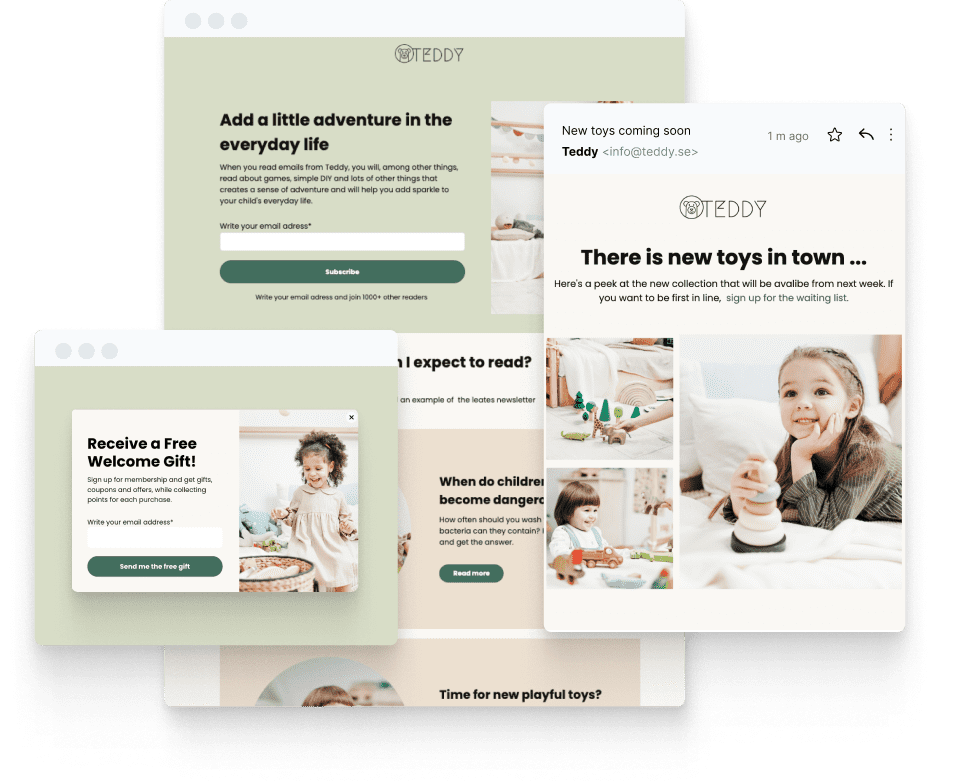
Keep reading
10 minutes
9 minutes
6 minutes
Get started for free
Explore newsletters, landing pages, and surveys. Market your
products and services. Increase your sales and customer loyalty.
